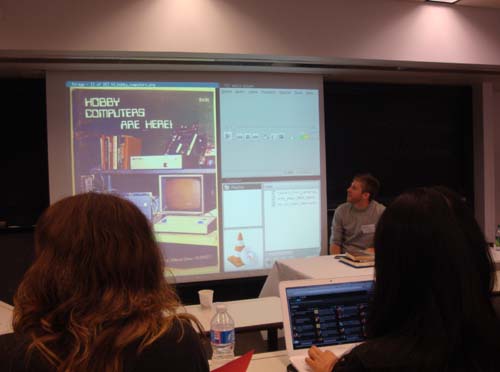Sandra Braman : braman [at] uwm.nedu
How did the creators of the internet create it with unstable environments? Evolution of internet and a policy analysis 1969-1979.
Complex matrix for privacy
Human: logging in, masking input, offline arrangements
Data: encryption
Network: private networking, termination of activity, message design
Some history: appearance of policy issues 1970 security. 1971 privacy , commercialization of the network
Boundary work: design criteria = policy principles:
Tech democracy, network-wide presence, network proprioception [network political citizenship as opposed to geographic citizenship] and stimulate innovation qua innovation
- Geopolitical vs network-political citizenship. You cannot be a good geopolitical citizen and a political citzen. Technical sensitivities.
- Instability: the Internet Case: epitomizes digital instabilities; hortatory value re lessons not learned. Everything done must be backward compatible. Two internets running Ipv4 vs Ipv6 running simultaneously and not compatible.
- Difficulties: began by thinking all decisions would have to be permanent: paralyzing and unrealistic. There must be experts somewhere. Pervasive variability: everything susceptible to change: programing languages, software, hardware, network levels, users and user practices. Division & multiplication.
- The techniques used: definitional labor [what is the network?] ; they are describing communications and what it is to communicate even though they were not social scientists. Glocalization.
- Conceptual labor: identify common elements across processes for standardization. Design programming languages and character sets to maximize flexibility. Virtual machines, applications, processes.
- Network agency: dameons = computer processes or software programs [neither human nor divine].
- Rhetorical tools: design assumptions, constraints and recommendations articulated. What is not articulated does not exist. Models shape perceptions of problems and engage in technologies.
- Live with paradox: expect instability, expect unknowns but assume everything works. Document everything; never use imprecise words in protocols
More from Braman’s talk here.
 Kevin Driscoll: free culture board member
Kevin Driscoll: free culture board member
Open letter to hobbyists: written by Bill Gates.
Key term here is hobbyists. They programmed with calculators and read magazines like radio-electronics which had about one column on computers.
Hackers: Wizards of the Electronic Age [documentary]
The history is an incredibly powerful mythology. They are real humans.
Colleen Kaman:
Map of internet connectivity and then in 1997.
How it became possible that the Internet became so prevalent? Its technical attributes allowed it to be successful. Expansion of Internet was expanded by politics. Trade shows were important and helped in its spread. Interop was a trade show started in Silicon Valley and Vinct Cerf was part of the founding group. In 1986 they went together bec they had a series of governance structure. The began to lose control of the internet and bec there was a clear and articulated competing standard of internet protocols. The defense group were not about to lose control and letting TCP/IP go or not be part of the internet network. They came up with idea of the trade show that brings together members interested in computing and offered tutorials and created shownet which is really a global internet and constructed it in a matter of days and is one of the more complex ones in the world. 35 miles of cable and 50 subnets, 2 different backbones. Interop functioned not only as a place for vendors to test their products but wanted to compete in the global market and encouraged people to create products based on it so that they can be dependent on it. They encouraged them to build networks to function with TCP/IP. Academics worked together with vendors to create a business model dependent on that standard and popularized it. Interop created a negotiating space outside the competitive market so that if one failed, they were able to move on. Internet protocol by mid 1990s TCP/IP became the standard.